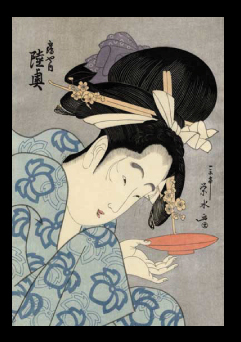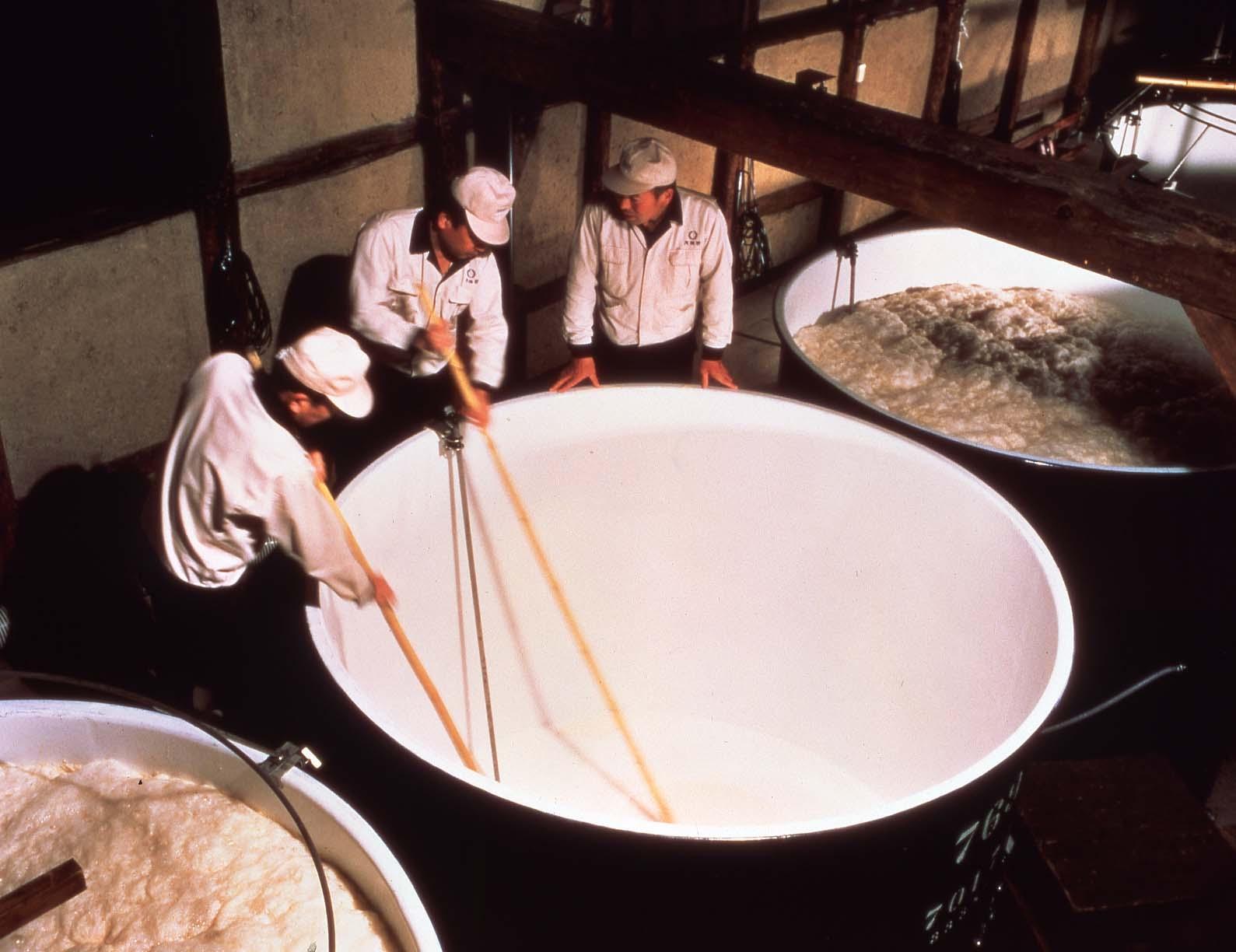
The Sake-Making Process
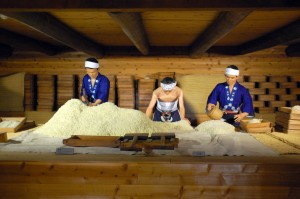 Sake represents over 2,000 years of Japanese tradition and culture. The unique processes of creating sake are called Moromi and Momori. See our Sake Process Chart for more details.
Sake represents over 2,000 years of Japanese tradition and culture. The unique processes of creating sake are called Moromi and Momori. See our Sake Process Chart for more details.
Moromi Preparation
Sake is made from water and rice. Because 80% of sake is water, water quality is of the utmost importance in sake brewing.
The sake brewing process starts with polishing rice. There are dozens of different rice breeds that are used for sake brewing. Bear in mind, that sake brewing rice is very different from the rice at your local Japanese restaurant. Rice grains are milled to remove the outer layers that contain impurities that can adversely effect flavor and aroma.
The milled rice is washed to rinse off rice bran, steeped to the core, and then steamed, usually for around 40 minutes. At this stage, the rice is called jomai, otherwise known as steamed rice.
From the jomai, koji (malted rice) is made via the additon of an enzyme catalyst. First, the enzyme catalyst is sprinkled over the jomai and then allowed sit for around 48 hours.
After koji is made, it is mixed and stored in a clean tank filled with water, jomai, and purely propagated yeast. After about two weeks, the yeast multiplies to 200 to 300 million per gram. This results in moto, or the basic mash of unrefined sake.
Making Momori
Additional water, jomai, and koji are added to the moto. The mixture is left intact so that on the following day the yeast will multiply. On the third day, exponential amounts of water, jomai, and koji are added.
It takes approximately four days to make moromi. Employing this method of moromi production enables the brewers to curb the propagation of unwanted bacteria while the yeast multiplies. This three-step process is known as Sandan-Jikomi or “three step process.”
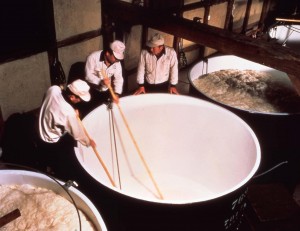 In the tank, the enzyme that has been produced in the koji-making process, liquefies the jomai and converts the starch into glucose. The yeast thereupon converts the glucose into alcohol. This process, wherein saccharification and alcohol fermentation takes place simultaneously is better-known as “multiple parallel fermentation.” The process of balancing saccharification and alcohol fermentation is essential for obtaining successful results.
In the tank, the enzyme that has been produced in the koji-making process, liquefies the jomai and converts the starch into glucose. The yeast thereupon converts the glucose into alcohol. This process, wherein saccharification and alcohol fermentation takes place simultaneously is better-known as “multiple parallel fermentation.” The process of balancing saccharification and alcohol fermentation is essential for obtaining successful results.
The moromi is matured at low temperature for 25 to 40 days, depending on the grade of sake sought.
The result of the multi-step preparation, multiple parallel fermentation, and extended moromi fermentation at low temperature, is sake that contains 20 percent alcohol.
Pressing and Storage Process
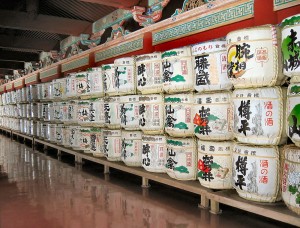 The matured moromi is pressed and separated into “seishu” (purified sake) and “sakekasu” (sake lees).
The matured moromi is pressed and separated into “seishu” (purified sake) and “sakekasu” (sake lees).
The purified sake is filtered to remove minute traces of residual lees.
The final step, is pasteurization at approximately 65 degrees Celsius to stabilize quality. Once pasteurized, it is stored in a tank. The pasteurization procedure is called “hiire“, and was used first in Japan over 300 years ago. Louis Pasteur, the famed French chemist and biologist discovered a similar method later.
Sake produced during the spring is stored until fall. While stored, the sake matures, smoothens, and develops its flavor.
See our Sake Process Chart for more details.

